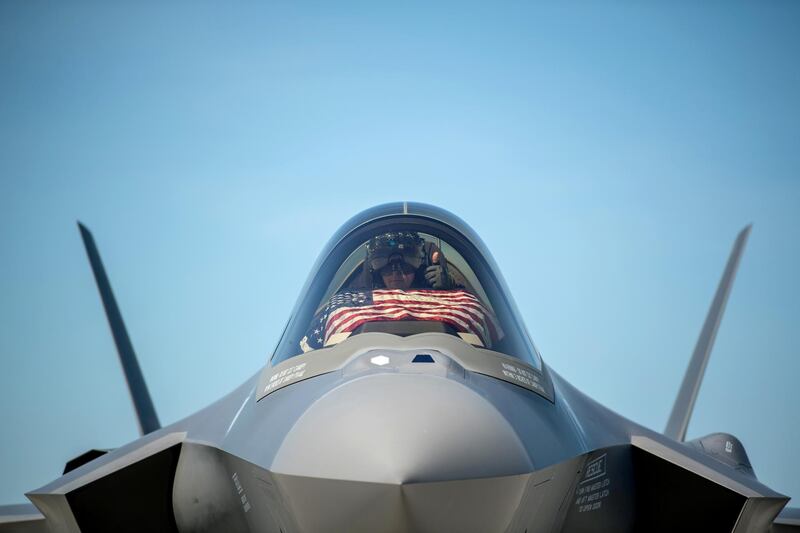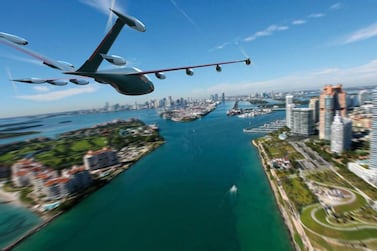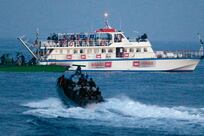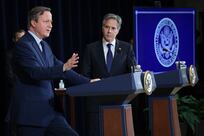This week, the world's militaries and defence companies have descended on Abu Dhabi for the International Defence Exhibition and Conference. In many ways, the event has presented a unique opportunity for the top brass to explore, discuss and adopt the latest trends in the sector, and for innovative companies to showcase their products and solutions.
Innovative and cutting-edge technologies have taken centre stage with use-cases for solving some of the biggest issues that currently shroud the world of defence, security and aerospace. A prime example of this has emerged when looking at how militaries produce pilots.
The training of military aviators is undeniably complex and expensive, and so is the management of pilot inventory. If an air force turns out too many or too few pilots, its operational readiness can be hindered. In some cases, this imbalance can take years to rectify.
Since the end of the Cold War, air forces have found it difficult to hit that sweet spot of having the optimum number of airmen and airwomen that they actually need. During the Cold War, many air forces were able to balance the optimum number due to the size and scale of the militaries they were required to maintain. But when the collapse of the Soviet Union led to a period of relative peace and stability, global priorities shifted from collective security to international co-operation. Many militaries faced budget cuts and restructuring, which caused an imbalance in pilot numbers that has ever since been difficult to rectify.
In recent years, the production and retention of pilots have become critical issues. The industry outlook for commercial pilot demand for 2020-2029 estimates that there will need to be more than 260,000 new personnel over the next 10 years. Airlines have traditionally sought military pilots because of their high-quality training and reduced flight time requirements. And even though the Covid-19 pandemic has stalled their exodus from the military to civil aviation sector, this will be a short-term pause. In the not-too-distant future, militaries will again find that pilots are leaving faster than they can be replaced.
A 2018 report by the Government Accountability Office in Washington noted that the US Air Force, Navy and Marine Corps had fewer pilots than available positions. This gap was largely attributed to reduced training opportunities and increased attrition of fighter pilots, but also other factors, such as the lack of availability, serviceability and sustainability of aircraft. This has been the case with other large militaries as well, including in Europe and Asia.
To plug this gap, these militaries need to drastically curb the time it takes to train their pilots. Thankfully, cutting-edge technologies, such as virtual and augmented reality and adaptive learning systems, can provide a tangible solution. How? Well, these technologies allow aspiring pilots to practise and perform in a virtual world with greater frequency, thereby shortening the traditional training time.
Operators must therefore be willing to embrace these new technologies if they want to produce pilots faster, better and more efficiently. This is exactly what the US Air Force is doing as part of its Pilot Training Transformation initiative.
Another sore point is that existing pilot training techniques are no longer adequate for today’s needs. Decades ago, flight simulators helped revolutionise pilot training. Today, virtual and augmented reality (VR/AR) has emerged as the next big technological breakthrough.
The past few years have seen VR/AR applications and immersive training devices becoming increasingly more powerful and considerably better at advancing proficiency much earlier in the pilot-training process. The latest generation VR/AR headsets, for instance, enable aspiring pilots to fully immerse themselves in a cockpit of an aircraft and the high-fidelity virtual world around them. In fact, students sometimes get so absorbed that they reach out and try to grab something in the virtual cockpit, forgetting that it is not actually there.
VR/AR has come a long way. Combined with other digital technologies, such as data analytics and VR-enhanced courseware, it can streamline a pilot's training journey from day one until they earn their wings. Students are afforded the opportunity to practise with greater frequency and do so in a much more engaging virtual environment. The obvious benefit of immersive training – one built on a foundation of data analytics and supported by AI – is that the timeline for producing pilots can be much shorter while the output is better prepared pilots.
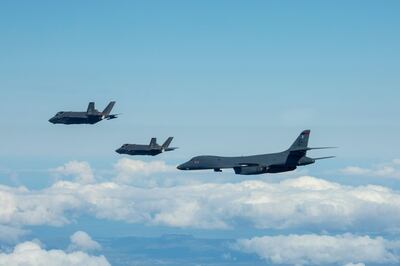
When it was originally proposed, many in the industry denounced VR/AR as nothing more than video games on steroids. However, the technology is gaining mainstream acceptance as a credible part of next-generation military pilot training, as evidenced by the US Air Force’s programmes. The Royal Air Force in the UK is also in the early stages of trials with these systems.
While we must acknowledge that VR/AR should not replace simulators or actually piloting an aircraft, its effectiveness has already been proven. The technology is here to stay, and as it further matures, it will become a fundamental part of the pilot training experience. Military operators should be willing to embrace it because an investment in VR/AR is an investment in the future of aviation and the next-generation military aviators.
Thibaut Trancart is the CAE's Middle East managing director
